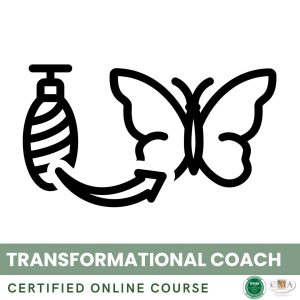Managing emotions and emotional load is a key skill in conducting a coaching interview, particularly with LGBTQ+ individuals. These individuals often have a background filled with intense emotions, related to their self-acceptance journey, faced discrimination, and sometimes painful coming-outs. The coach must know how to welcome and contain these emotions, without being overwhelmed themselves.
Welcoming emotions firstly involves recognising and legitimising them. When a person expresses anger, sadness, or fear, the coach should be able to put words to these feelings: “I see that you’re angry about your family’s attitude“, “I sense a great sadness in you when you mention this breakup“. This is a way to validate the emotional experience, to give it a place in the coaching space.
It’s important not to try to minimize or dismiss the emotions, even if they are uncomfortable. Phrases like “Don’t cry“, “You have to look at the positive side” are to be avoided. They send the message that certain emotions are unacceptable or shameful. This can be particularly harmful to LGBTQ+ individuals who often have to repress their feelings. Instead, the coach should encourage emotional expression, in a safe setting.
Containing emotions involves providing a stable and reassuring space to experience them without being overwhelmed. The coach acts as a kindly container, which welcomes the overflowing emotions without getting effected by it. It’s a bit like a dam that channels the flow of emotions, preventing it from turning into a destructive tsunami. The coach shows, through their calm and empathetic posture, that emotions can be experienced safely.
Practically, when facing a person in tears or in a rage, the coach can set the framework: “Take the time you need to let those tears flow, I am here“, “I see that you’re overwhelmed with anger, let’s breathe together to regain some calm“. It’s about gently regulating the emotional intensity, without curtailing it. The coach can suggest breathing techniques, body-centering, to help the person regain some balance.
The coach should also be attentive to their own emotional reverberations. Hearing stories of difficult coming-outs, family rejections, homophobic violence, can resonate with their own experiences or encourage strong empathy. It’s important not to let yourself be overwhelmed or stunned by these emotions, at the risk of no longer being available to the individual. The coach must have worked on themselves sufficiently to differentiate what belongs to them and what belongs to the experience of the other.
This doesn’t mean being cold or distant. The coach can express their emotion, they can say that they are touched, outraged, admiring. But they must maintain a just emotional detachment, not crying with the person or getting carried away with them. It’s a delicate balance between empathy and containment, that requires practice and supervision. The coach must know when to pass the baton if they feel too emotionally involved.
Managing emotions is not about making them disappear, but about making them tolerable and useful. Emotions are valuable information about the needs, values, and beliefs of the individual. Behind sadness, there may be a need for recognition; behind anger, a sense of injustice. By exploring their emotions delicately, the coach helps the individual to better understand themselves and to turn their feelings into levers of action.
For LGBTQ+ individuals, experiencing their emotions in a safe environment is often a healing experience. It allows them to unlearn shame and suppression, to tame long-denied feelings. By being welcomed in their full emotional being, without judgment, the individual can reintegrate parts of themselves that were alienated. It’s a path towards greater self-acceptance and self-affirmation.
The coach can also help the LGBTQ+ individual to develop their emotional skills: knowing how to identify their feelings, expressing them appropriately, managing their stress, calming down. This is particularly useful to handle situations of coming-out, discrimination, or conflict. By strengthening their emotional regulation, the individual gains inner strength and capacity to act.
Finally, the coach must be vigilant about positive emotions. Joy, pride, relief, hope… these feelings are powerful fuels for change. They are often present in the LGBTQ+ individuals, even in difficult times. Being able to identify them, amplify them, anchor them, is a major lever in coaching. “I see your face light up when you talk about your new associative project“, “What pride in your voice when you mention your successful coming-out!“. By nurturing positive emotions, the coach stimulates resources and self-confidence.
Managing emotions in coaching is a delicate art, which requires finesse, patience, and humility. It’s a journey into the intimate that can’t be undertaken without a deep respect for the other. For LGBTQ+ individuals whose emotions have often been violated, denied, or manipulated, providing this unconditional acceptance space is a precious gift. By learning to fully experience their emotions, in their shadow and light, the individual reconciles with themselves and unleashes their full potential.
Key takeaways:
– Welcoming and containing emotions is crucial in coaching LGBTQ+ individuals, who often have an intense emotional background related to their journey.
– Welcoming emotions is about recognizing, legitimizing, encouraging their expression in a safe setting, without trying to minimize or dismiss them.
– Containing emotions is about providing a stable and reassuring space to experience them without being overwhelmed, by gently regulating their intensity through breathing or centering techniques.
– The coach should be attentive to their own emotional reverberations and maintain a just detachment, with a delicate balance between empathy and containment.
– Emotions are valuable information about the individual, which the coach can delicately explore to turn them into levers of change.
– For LGBTQ+ individuals, experiencing their emotions in a safe setting allows them to unlearn shame, reintegrate parts of themselves, and strengthen their emotional skills.
– Nurturing positive emotions (joy, pride, hope) stimulates the resources and self-confidence.
– Providing this unconditional acceptance of emotions allows the LGBTQ+ individual to reconcile with themselves and unleash their full potential.
👉 To download docx (Editable) file click here : Click here
👉 To download PDF file click here : Click here
👉 To download MP3 file click here : Click here






